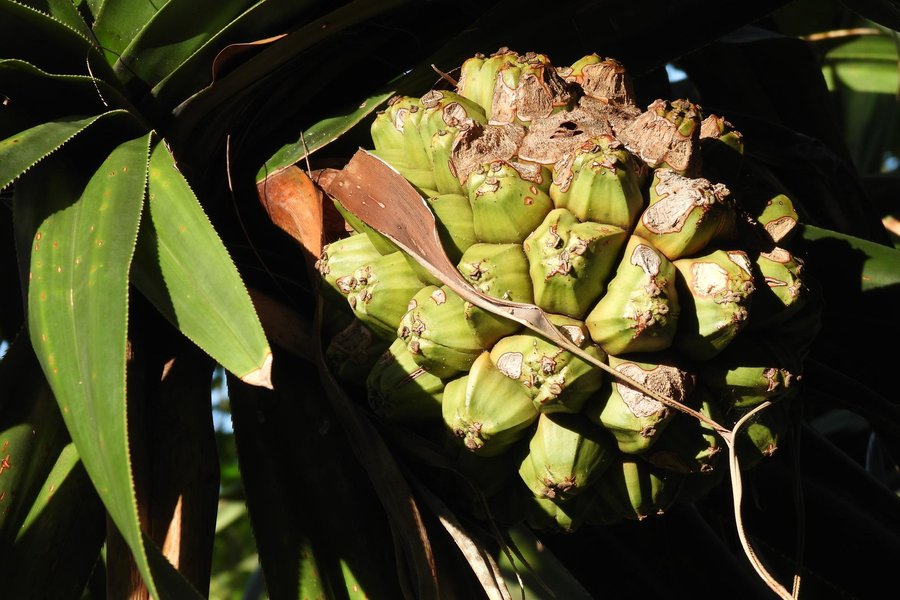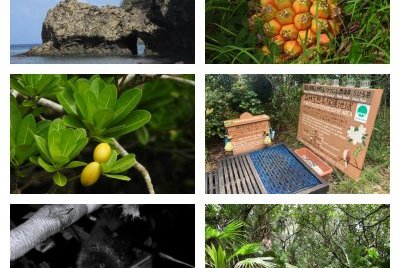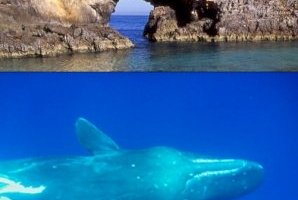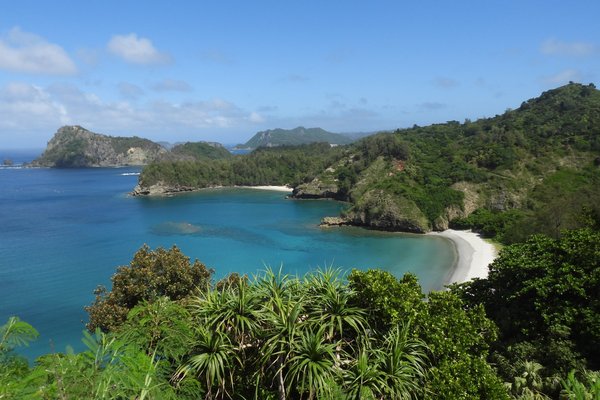Japan
Ogasawara Islands
The Ogasawara Islands are a group of oceanic islands that display the evolution process since the birth of the islands.
The forested landscape holds plant species of both Southeast Asian and Northeast Asian origin. It is a habitat for endemic and endangered species, including the Bonin Flying Fox, a critically endangered bat. Also remarkable are its 134 species of land snails and its variety of vascular plants.
Community Perspective: Zoë reports back on ample opportunities for hiking and sea-based activities such as diving and snorkeling. Els describes the land-based activities and provides practical tips on getting to Ogasawara.
Site Info
Official Information
- Full Name
- Ogasawara Islands (ID: 1362)
- Country
- Japan
- Status
-
Inscribed 2011
Site history
History of Ogasawara Islands
- 2011: Inscribed
- Inscribed
- Type
- Natural
- Criteria
- ix
Links
- UNESCO
- whc.unesco.org
- Official
-
- en.vill.ogasawara.tokyo.jp — Ogasawara Islands
- Related
-
- en.vill.ogasawara.tokyo.jp — Things to do on Chichijima
- en.wikipedia.org — Wiki on the Bonin Islands
All Links
UNESCO.org
- whc.unesco.org — whc.unesco.org/
Official Website
- en.vill.ogasawara.tokyo.jp — Ogasawara Islands
Related Resources
- en.vill.ogasawara.tokyo.jp — Things to do on Chichijima
- en.wikipedia.org — Wiki on the Bonin Islands
News Article
- Aug. 21, 2020 washingtonpost.com — On remote Japanese isle, old bonds with America stir modern questions over race and identity
- July 12, 2020 smithsonianmag.com — Nishinoshima’s Explosive Growth Creates New Land
- May 2, 2018 mainichi.jp — Airport plan a 'potential threat' to Ogasawara
- Jan. 30, 2018 www3.nhk.or.jp — New bird species found in Ogasawara Islands
- Nov. 23, 2013 the-japan-news.com — Volcanic eruption raises new islet amid Ogasawara Islands
- April 18, 2013 japandailypress.com — Ogasawara island threatened by non-native lizard
- June 26, 2011 mdn.mainichi.jp — Ogasawara island chain named as World Heritage site
Community Information
- Community Category
- Natural landscape: Insular
Travel Information
Needs a Ferry
Takes more than 5 days to visit
Recent Connections
-
Incorrect UNESCO 'Number of locations'
UNESCO map page lists 2 marine areas wi…
-
Perfect Inscriptions
2011 -
Bioluminescence
glow-in-the-dark Mycena chlorophos mush…
Connections of Ogasawara Islands
- Geography
-
-
Archipelagos
-
Formerly inhabited islands
North Iwo Jima was inhabited twice, first by Micronesians before the European discovery in the 16th century and then by the Japanese between 1889 and WWII -
Micronesia
previously inhabited by Micronesians, tectonically and biologically part of Micronesia -
New islands
An Island provisionally named as Niijima emerged in november 2013, but has since Dec 26 joined Nishinoshima and ceased to be a separate island.See en.wikipedia.org
-
Pacific Ring of Fire
-
Pacific Ocean
located in the western Pacific Ocean
-
- Trivia
-
-
Situated in an administrative exclave of a city
Administratively part of Tokyo City despite being situated 1000kms south of it. -
Dubbed as another WHS
Galapagos in the Orient -
Built or owned by Americans
Under US control from 1945-1968 (they introduced the goats that degraded the vegetation on Chichijima and Mukojima)
-
- History
-
-
Once Claimed for the USA
"Commodore Perry's flagship USS Susquehanna (1850) anchored for three days in Chichijima's harbor on June 15, 1853 on the way to his historic visit to Tokyo Bay to open up the country to western trade. Perry also laid claim to the island for the United States for a coaling station for steamships, appointing Nathaniel Savory as an official agent of the US Navy and formed a governing council with Savory as the leader. On behalf of the US government, Perry "purchased" 50 acres (200,000 m2) from Savory" (Wiki). The US appears to have simply acquiesced in Japan's 1862 formal claim over all the Bonin Islands
-
- Ecology
-
-
Turtles and tortoises
Green turtle (also lays eggs here), loggerhead turtle, hawksbill turtle and leatherback turtle
-
Whales
Breeding grounds of humpback whales and sperm whales, also sightings of sei whale, blue whale and north pacific right whale -
Coral
-
Endemic Bird Species
Ogasawara Islands (its own EBA) - Japanese Wood-pigeon (Columba janthina), Bonin Wood-pigeon (Columba versicolor), Bonin White-eye (Apalopteron familiare), Bonin Thrush (Zoothera terrestris), Bonin Grosbeak (Chaunoproctus ferreorostris)See www.birdlife.org
-
Stratovolcanoes
The two islands from the Kazan Group are mountainous with both islands formed from the summits of giant submarine stratovolcanos. (AB ev) -
Natural Arches and Bridges
Natural stone arch at Minamijima -
Notable for Bats
"... home to a wealth of fauna, including the Bonin Flying Fox, a critically endangered bat," -
Molluscs
"The islands are the habitat for more than 100 recorded native land snail species, over 90% of which are endemic to the islands." -
Sharks
Sand Tiger Sharks -
Endemic Species that include the WHS name
Ogasawara okomori (the Japanese name for the Bonin Flying Fox) -
Albatross breeding sites
Three North Pacific albatross species breed on Mukojima: Black-footed Phoebastria nigripes, Laysan P. immutabilis (both Near Threatened) and the globally Vulnerable Short-tailed P. albatrus.See www.acap.aq
-
Bioluminescence
glow-in-the-dark Mycena chlorophos mushrooms
-
- Damaged
-
-
Hit by Tsunami
Chichijima 1826, 1944, 1960
-
- World Heritage Process
-
-
Inscribed on a single criterion only
ix. to be outstanding examples representing significant on-going ecological and biological processes in the evolution and development of terrestrial, fresh water, coastal and marine ecosystems and communities of plants and animals -
Incorrect UNESCO 'Number of locations'
UNESCO map page lists 2 marine areas without coordinates. These are not separately visible on the maps. They are also not mentioned in the nomination dossier, except for one "marine area", without coordinates as well, apparently just to show the size of the marine area versus the terrestrial area.
-
Perfect Inscriptions
2011
-
- Human Activity
-
-
Traditional Hunting
"A licensed fishery is operated for the traditional capture of green turtles" (nom file p99) -
Natural sites with indigenous human population
includes villages of Bonin Islanders, a mixture of European and Pacific settlers who talk Bonin English, also called Ogasawara Mixed Language
-
- WHS on Other Lists
-
-
Located in a TCC Territory
Ogasawara -
Biodiversity hotspot
Japan -
Centres of Plant Diversity
PO1 Bonin (Ogasawara) Islands - "The property's ecosystems reflect a range of evolutionary processes illustrated through its rich assemblage of plant species from both a Southeast Asian and a Northeast Asian origin. There is also a very high percentage of endemic species"
-
- Timeline
-
-
Eocene
The Ogasawara Islands were formed around 48 million years ago. (Wiki)
-
- Visiting conditions
-
-
Needs a Ferry
Transportation is limited to the Ogasawara Kaiun ferry, the Ogasawara Maru, departing from Takeshiba, Tokyo to Chichijima. The ferry runs every three days in each direction and takes 24 hours one way in good weather, but longer if the sea is rough (and it often is). (wikivoyage) -
Takes more than 5 days to visit
Ferry from Tokyo takes (at least) 24 hours, return ferry starts 3 days and 4 hours later, so just over 5 days round trip.
-
- WHS Names
-
-
Named after individual people
Sadoyori Ogasawara: "in honor of Ogasawara Sadayori, a supposed ancestor of the ronin Ogasawara Sadatō fictitiously credited with the discovery of the chain" (wiki)
-
News
- washingtonpost.com 08/21/2020
- On remote Japanese isle, old bonds…
- smithsonianmag.com 07/12/2020
- Nishinoshima’s Explosive Growth Cr…
- mainichi.jp 05/02/2018
- Airport plan a 'potential threat' …
Community Reviews
Show full reviews
I traveled here years ago while teaching English in Tokyo. I had a vacation, had already traveled widely, and this place caught my eye, for its obscurity. Administratively, the islands are part of the city of Tokyo, even though they’re on the same latitude as Okinawa, much further out into the Pacific than any other Japanese islands. Iwo Jima, where the US Marines raised their flag on 23 February 1945, is part of the island group, but civilian visitation is almost completely restricted. Another island was also off limits when I visited, due to a Japanese military base. At the time, traveling by ferry in the cheapest class seemed like an interesting travel experience, and I remember lying around on fake tatami mats, eating snacks and drinking beer. Speaking Japanese helped, as I chatted with folks my own age, and it was fun when the boat rolled in some seas. We all went ‘whoa’ together, tried not to slide, and then chuckled nervously.
When I finally arrived in Chichijima (Dad Island), I was surprised to find many young people from around the world visiting, and they asked me if I was there to watch the international junior surfing championships. Apparently, during the typhoon season—late summer/ early fall—, there’s epic swell that attracts some of the world’s best surfers. I hadn’t planned to watch, but I did wander around a few beaches without seeing much actual surfing. On the other hand, I did spend a lot of time with several …
Keep reading 0 comments
My first one from the “Takes 5 days or more to visit”-list! The Ogasawara Islands are a Japanese archipelago in the Northern Pacific Ocean about 1,000km south of Tokyo and 1,800km north of Guam. They can only be visited by a weekly ferry which takes 24 hours to cover the distance. About 2,500 people inhabit its two main islands. Settlers arrived here in the 19th century, the islands were mostly uninhabited before. After having been taken by the US during the Second World War, the islands were returned to Japan in 1968.
Despite being a group of islands, the OUV is not marine but firmly focused on land (rapidly diversifying land snails! endemic plants!) – even UNESCO seems to have forgotten that as its Galleryonly shows photos of sea creatures. About 80% of the core zones of the 5 components are land-based. On Chichi-jima, where I stayed for 3 nights, the core zone of the WHS covers about 65% of this island; the coastal villages and agricultural fields are excluded.
The protected area that lies closest to the main settlement of Omura is Miyanohama Beach. And that is where I headed on my first afternoon on the island. It’s only a 1.2km walk, but I learned quickly that the hills on the island are very steep. The bay has characteristic volcanic arches and outcrops, and inland I got my first good look at the endemic, fruit-bearing Pandanus trees.
In the evening I joined …
Keep reading 0 comments
Also called the Bonin Islands but that won't get you far with the locals, has 30 islands but you will only visit two of them tops. You will always arrive at Chichi-jima (Father Island) by ferry and it continues to Haha-jima (Mother Island) before returning the same way. This ferry goes twice a week most of the year and takes 24h from Tokyo. There is no faster way to get here and returning will only be after at least 3 days on the island. You will not want to leave as the islands are lovely but you MAY want to leave because it's quite off the beaten path and expensive too. I've been wanting to do this your EVERY time I had something planned for Japan and buying the ferry tickets is actually really easy, but not so much for hotels!! They are sold out for months ahead especially for the golden weeks (=peak holiday season) and to make things worse you can ONLY book by contacting the hotels/hostels/"guest houses" which don't speak English. So...err.. good luck? Well there is one place on booking.com but it far way from the port area and getting to there and then getting around seemed very annoying. You can rent a scooter or car if you really want but that just seems silly for a place like this. Scooter...maybe. and there is a bus service but it would just be a burden to stay far away and having to come back to port for …
Keep reading 0 comments
